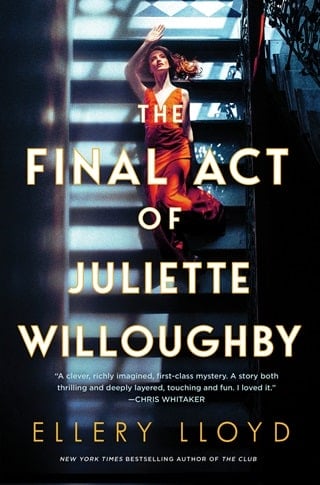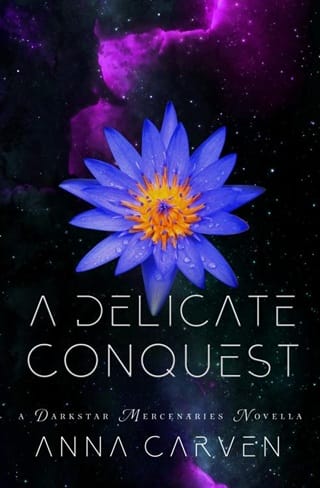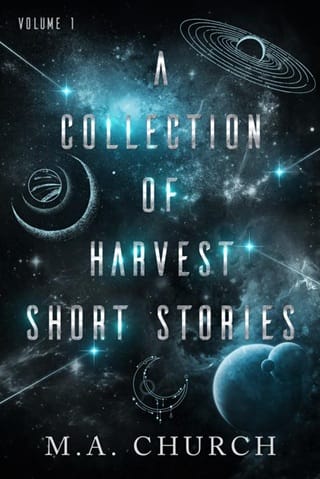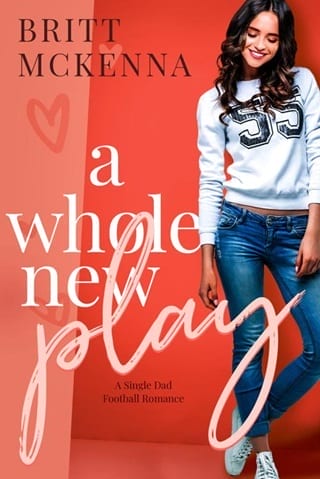Epilogue
CAROLINE, ENGLAND, THE PRESENT DAY
It is a bright November afternoon and after a brief ceremony, they are re-interring the body of Jane Herries, the Missing Maid of Longhurst, in a plot next to her sister, Helen, in Arnos Vale cemetery, Bristol.
Patrick and I felt we ought to be here, really.
I was worried that there would be a lot of press in the church, but apart from one reporter from a local paper, it is just us and the few members of Herries's family who could be traced. The focus of the vicar's eulogy is her life, not her murder, the name of her murderer not mentioned. It does not need to be—the story has been endlessly reported on the news, with drone footage of the police cordon on the island, officers in hazmat suits removing items from the pyramid.
It had not been easy to persuade the police to take us seriously. I could tell that the officer who accompanied us to the island was humoring us initially, but when we arrived at the pyramid her mood perceptibly shifted. It felt undeniably eerie, overgrown. The chain on the pyramid's metal door was so rusted it looked like something from a shipwreck. The lock came away on Patrick's first tug, but the door, rusted shut, took a lot more effort to pry open. In the end, the hinges gave way entirely. Beyond was a narrow passageway, a flight of stone steps leading downward.
In single file, we made our way down them.
At the bottom of the steps there was a chamber, empty apart from two stone sarcophagi. Inscribed into the smaller one, in copper letters that had left trails of rust down the stone, were Lucy Willoughby's name and her poignant dates. The name and dates on the larger were Cyril's. I already knew not to expect to find a tomb here for Cyril's wife, Juliette's mother, who had predeceased her husband. She was buried in the local churchyard, something she had apparently insisted upon throughout her final illness and in her will.
We paced the chamber's perimeter, searching for signs of secret doors or inner chambers, but the walls were blank. There was no way Cyril could have hidden Herries's body in his own sarcophagus, as it would have been found when they buried him, and he would surely not have violated the sarcophagus containing the remains of his beloved daughter. It briefly crossed my mind that perhaps the Willoughbys were right, that this whole thing might have been a bizarre delusion on Juliette's part, her way of processing a series of horrible, senseless tragedies. Patrick looked as baffled as I felt.
"It's not here, is it? She's not here. We were wrong."
Then I thought of something. "Do you recall which pyramid this is modeled on? Which specific pyramid."
"Djoser, at Saqqara. The oldest of all the pyramids. That's what Cyril claimed, anyway."
"Right. And under the pyramid at Djoser there are catacombs—a whole elaborate system of tunnels and interconnected burial chambers. Sam Fadel told me about them."
The name was out of my mouth before I could stop myself. Patrick pointedly ignored it.
"So what you're saying is that what we're looking for might be underneath us?"
The police officer, playing along, directed her torch at the floor.
"And what exactly are we looking for, right now?" she asked.
"Something like that," said Patrick.
And there they were, right where the torch was now pointing: chisel marks on the stone floor where a slab had been loosened and lifted.
The police officer had a tire iron in her car, which she went back across the lake and retrieved. Even then it was tricky to find the right angle to lift the heavy slab.
The steep tunnel of damp stone that was revealed was just big enough for an adult to crawl down, the torch illuminating it to a distance of about thirty feet.
The officer insisted on going down first. Patrick followed. I waited at the entrance to the tunnel. "It flattens out after about forty feet," the police officer shouted back. "Then there is a chamber."
There was silence, then a gasp and a sharp order barked at Patrick to back up. He reluctantly did so, huffing and puffing, crawling backward up the tunnel. The police officer scrambled out after him. As I helped her to her feet, I realized she was shaking.
"What is it?" Patrick said. "Did you find the body?"
She shook her head. Her face was ashen. "Not just one body. There must be at least a dozen."
IT HAS BEEN A strange six months. Patrick's dad's funeral first, then Harry's. Freddie's trial—there was footage on the news of Athena arriving at court to support him, in her huge dark glasses, ignoring questions from the media—and his conviction. All the legal wrangling about who would inherit Longhurst, and what would happen to Harry's share of the money from the sale of the painting. Patrick's separation from Sarah. The laborious business of disentangling their financial affairs, coming to an arrangement about the house, trying to sell the gallery. Then the news in the last few weeks that she had started seeing someone else, someone a little younger than Patrick, a lot sportier. From the pictures she had shared on Instagram of them together—kite surfing, body boarding, scuba diving—they looked very well suited to each other, perhaps much better than she and Patrick had been. He had messaged to say he wished them every happiness.
As for Patrick and me, we have tried to take things in slow, tentative steps. Dates. Long dinners picking over the past, trying to work out where things went wrong last time. Serious conversations about how we can ensure it doesn't happen again.
We talk about Harry. It wasn't until his autopsy results were made public that a fresh mystery emerged. The cause of death was exactly what it had appeared to be—the severance of his carotid artery, resulting in catastrophic blood loss. What no one had expected was the level of lead in his blood. Wildly high levels of lead, which could have resulted only from months at least of ingesting the stuff somehow. Nor had the coroner been able to offer any plausible explanation for this.
The first thing that Patrick did, when he heard, was to start counting on his fingers how long it had been since Harry had moved back to Longhurst. How long since he had opened up the oldest part of the house, the east wing, and moved into Cyril's old suite of rooms.
"Do you remember how shaky, how weird and moody and odd Harry was?" he asked me. "What if this is why? Lead poisoning. It used to happen to artists all the time, from the lead in their paints. Killed Caravaggio when he was thirty-eight, but not before he murdered a man in a brawl, fell out with all his patrons, and got arrested for wandering around with a sword, probably the same sword he famously poked a hole in his own ceiling with to let more light in to paint by. Oddball behavior, just like Harry, right? Then there's Goya, and his transformation from conventional court portraitist to painter of grotesques—the theory is that lead poisoning filled his head with demons and ghouls. And Van Gogh..."
"I know all that, Patrick. But what has it got to do with Harry? He wasn't a painter and even if he had been, modern paints don't poison artists."
"No, but listen: What if there was lead in the pipes? That was the oldest part of the house he had moved into, and it had never been overhauled, as far as I know. Nobody else has lived in those rooms since Cyril died."
Patrick was already looking up the effects of lead poisoning on his phone. "Here you go: irritability, loss of motor control, slurred speech, headaches, tiredness. Does that not sound familiar?"
He continued reading, eyes widening. "Fits of rage. Hallucinations. Caroline, do you think that lead poisoning might partly explain Cyril's behavior too?"
Perhaps, I conceded. How many years, after all, had Cyril been rattling around in there, drinking that water, bathing in it, brooding on his grief? Was it any wonder that he grew stranger and stranger, his fixations becoming increasingly sinister and bizarre? Even now, not all of the eighteen bodies at Longhurst had been identified. Still, the police were working through old missing person reports. Searching for newspaper stories about grave robberies. Checking morgue records.
"In a way," Patrick said when he read the news that morning that Longhurst's new owner, a property developer, was planning to keep only the fa?ade of the original building and turn the rest into luxury flats, "it's for the best that they're knocking the bloody place down."
AFTER JANE HERRIES'S INTERMENT, there is no wake, just tea and coffee in the hall next door. A member of her family approaches to thank us.
There is still, of course, one mystery left unsolved.
For six months, Dave White has been in talks with Tate Modern about the two Self-Portraits as Sphinx. His suggestion being that he loans both paintings to the gallery, that they hang opposite each other, the overpainted one directly facing the untouched. It is an elegant idea and one the Tate is quite taken by. The problem is, we still have no convincing explanation of how Juliette could have painted both pieces.
About once a week, Dave White messages me to ask if I have worked it out. Sometimes, lying half awake next to Patrick in the early hours of the morning, I feel like I might be on the cusp of putting it all together, but by the time I wake up fully it has always slipped away again.
It is as I am talking to one of Jane Herries's distant relatives in the hall after the service, as they are showing me pictures on their phone of her sister, Helen, in later life, and I am searching for similarities, a family resemblance, between the face of this smiling old woman and the pictures of Jane that newspapers printed in the 1930s, that something occurs to me.
Outside, from the car park, before I have even worked out the time difference in Dubai, I call Dave.
He answers straightaway. "Have you got it?"
"Maybe. Your facial recognition software—it's designed to factor in aging, isn't it? Can it also predict how someone's face might change, as they get older?"
"Yes, pretty accurately, as it happens."
"If I send an image to you, how long will it take to process?"
Dave says it won't take more than a couple of minutes. I google Juliette Willoughby. Her passport photo, the one I found in the Willoughby Bequest all those decades ago, comes up. I send this to Dave with the request that he age her six decades.
"You want me to make twenty-one-year-old Juliette Willoughby a very old woman? It would be more reliable if we had more images, but I'll try."
Patrick has come out of the hall to check if I am okay. I give him a thumbs-up. He goes back in again. My heart is fluttering in my chest. Years ago, in our very first supervision, Patrick said that there were two things everyone knew about Juliette Willoughby. That all her work was lost and that she died in a fire in Paris in 1938. It was now an established fact that only one of those things was true. The thought that had suddenly occurred to me was that perhaps neither was.
That perhaps Juliette had somehow survived the fire but had believed her painting destroyed. That she had painted it again. That she had somehow, perhaps with Quentin's assistance, planted it at Longhurst, along with a trail of clues—the journal in the library, the photograph in the Witt—that would one day lead someone to it and enable them to identify it when they did. Which led Patrick and me to it—except that somehow, by some quirk of fate, the painting we stumbled across there was not the repainted version but the original, the one Austen Willoughby had overpainted to conceal its message but not destroyed.
My phone buzzes in my bag. I grab it. The message is from Dave. "Any help?" it reads. Attached to the message is an image. I click on it.
"My God," I say aloud. "Oh my God."
Because I am looking at the face of Juliette Willoughby, a Juliette Willoughby who did not tragically die at the age of twenty-one but who survived to live a long, full life.
I am looking at the face of the woman who painted one of the great masterpieces of twentieth-century art, twice.
I am looking at the face of a woman who once spoke to me passionately, movingly, of the ways in which women's art is neglected and forgotten and destroyed; of what it might mean, and what it might take, to try to recover what has been lost.
I am looking at the face of a woman I once knew.
I am looking at the face of Alice Long.
 Fullepub
Fullepub 



